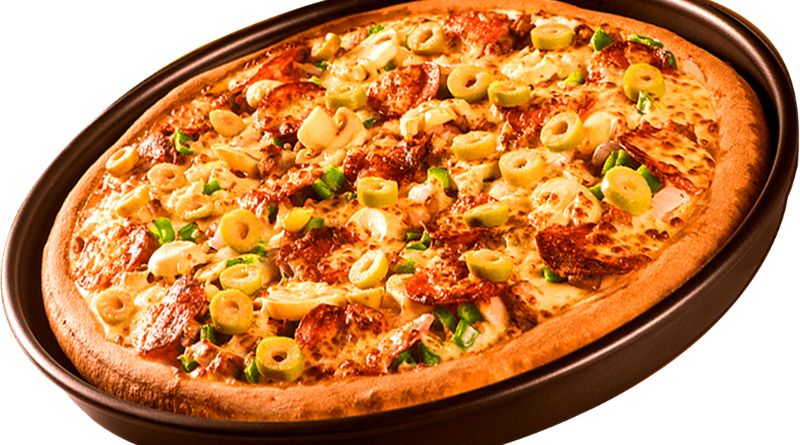“Can You Still Eat That Pizza? A Guide to Food Safety Time Limits”
Understanding the Danger Zone for Food
The Two-Hour Rule Explained
Okay, so you’ve got that leftover slice from the best pizza in ohio, and you’re wondering how long it can hang out on the counter. The two-hour rule is pretty straightforward: food shouldn’t sit at room temperature for more than two hours. This is because bacteria love to party in that temperature range. If it’s a super hot day (like above 90°F or 32°C), that time gets cut down to just one hour. Set a timer, people!
Temperature Ranges to Avoid
Think of the “danger zone” as a bacterial playground. It’s the temperature range where bacteria multiply like crazy, making your food unsafe to eat. Here’s the range you need to remember:
- 40°F to 140°F (4°C to 60°C): This is the danger zone.
- Below 40°F (4°C): Bacteria growth slows down.
- Above 140°F (60°C): Most bacteria are killed.
Keeping food either really cold or really hot is key to preventing foodborne illnesses. It’s all about controlling the environment where bacteria can thrive.
Why Bacteria Thrive in Certain Conditions
Bacteria are like tiny, hungry monsters, and they need certain things to survive and multiply. They love warmth, moisture, and food (duh!). When food sits out at room temperature, it provides the perfect conditions for them to grow. Some bacteria can double in number in as little as 20 minutes! That’s why knowing how long can pizza sit out is so important. Here’s a quick rundown:
- Temperature: As mentioned, the danger zone is their happy place.
- Moisture: Bacteria need water to grow, so moist foods are more susceptible.
- Time: The longer food sits out, the more bacteria will grow.
- Food Source: They need something to eat, and many foods provide that. Think of that delicious pizza!
Pizza’s Peril: How Long Can Pizza Sit Out?
Okay, so you’ve got some leftover pizza from that late-night craving, or maybe you ordered too much from the best pizza in ohio (it happens!). The big question is: how long can pizza sit out before it becomes a science experiment? It’s a valid concern, and one that can save you from a world of stomach upset. Let’s break down the risks.
The Cheese Factor: Dairy and Spoilage
Cheese, that gooey, delicious topping, is also a prime suspect when it comes to spoilage. Dairy products are notorious for harboring bacteria, and cheese is no exception. The longer your pizza sits out, the more time bacteria have to multiply. Soft cheeses, in particular, are more susceptible. Think about it: that creamy mozzarella is a breeding ground waiting to happen. So, while it might look and smell okay at first, the clock is ticking.
Meat Toppings: A Higher Risk
If your pizza is loaded with pepperoni, sausage, or any other meat toppings, you’ve got an even bigger reason to be cautious. Meat provides a rich source of nutrients for bacteria, making it an ideal environment for rapid growth. Undercooked or improperly stored meat can contain harmful pathogens like Salmonella or E. coli, which can cause serious illness. So, that meat lover’s pizza? Handle with extra care.
Vegetable Toppings: Still a Concern
Don’t think you’re off the hook if you’re a veggie pizza fan. While vegetables might seem less risky than meat or dairy, they can still contribute to spoilage. Vegetables can carry their own set of bacteria, and their moisture content can create a favorable environment for microbial growth. Plus, some veggies, like mushrooms, can become slimy and unappetizing pretty quickly. So, even if it’s a garden-fresh pizza, keep an eye on the time.
The general rule of thumb is that perishable foods, including pizza, should not be left at room temperature for more than two hours. If the temperature is above 90°F (32°C), that time is cut down to one hour. This is because bacteria multiply most rapidly between 40°F and 140°F (4°C and 60°C), a range known as the “danger zone.”
So, how long can pizza sit out? Here’s a quick recap:
- Two hours at room temperature (or one hour if it’s hot).
- Meat toppings increase the risk.
- Even veggie pizzas can spoil.
Refrigeration: Your Best Defense Against Spoilage
Refrigeration is your main tool in the fight against food spoilage. It dramatically slows down the growth of bacteria, keeping your food, including that leftover best pizza in ohio, safe to eat for a longer period. But just tossing it in the fridge isn’t enough; you need to do it right.
Proper Storage Techniques for Leftovers
First things first, don’t let your pizza sit out for too long before refrigerating. Remember the two-hour rule? Get that pizza into the fridge ASAP. When storing, consider these points:
- Divide large pizzas into smaller, manageable portions. This helps them cool down faster.
- Don’t stack containers directly on top of each other when they’re still warm. This can trap heat and slow the cooling process.
- Make sure your fridge is set to the correct temperature (below 40°F or 4°C).
Airtight Containers: Essential for Freshness
Airtight containers are your best friend when it comes to storing leftover pizza. They prevent the pizza from drying out and also minimize exposure to bacteria and other contaminants floating around in your fridge. Here’s why they’re so important:
- They create a barrier against odors from other foods in the fridge.
- They help maintain the pizza’s moisture content, preventing it from becoming dry and stale.
- They reduce the risk of cross-contamination.
Using proper containers is a simple step that can significantly extend the shelf life and maintain the quality of your leftovers. It’s a small investment that pays off in terms of food safety and reduced waste.
Shelf Life in the Fridge: What to Expect
So, how long can pizza sit out, and then how long will it last in the fridge? Generally, properly stored pizza will last for 3-4 days in the refrigerator. After that, the risk of bacterial growth increases significantly, and the quality starts to decline. Here’s a quick guide:
| Food Item | Fridge Shelf Life |
| Pizza | 3-4 days |
| Cooked Meat | 3-4 days |
| Vegetables | 3-7 days |
Keep in mind that these are just guidelines. Always use your senses to determine if food is still safe to eat. If it looks, smells, or feels off, it’s better to be safe than sorry and toss it out.
Freezing Food for Extended Safety
Freezing is a great way to extend the life of your food, especially if you’ve got leftovers from that best pizza in ohio. But it’s not a magic bullet. You still need to follow some rules to make sure you’re not just creating a cold, bacteria-filled brick. Let’s break down how to freeze pizza properly and thaw it safely.
Best Practices for Freezing Pizza
Freezing pizza isn’t hard, but doing it right makes a big difference in the final product. Here’s what I usually do:
- Cool it down first: Don’t toss hot pizza straight into the freezer. Let it cool to room temperature first. This prevents condensation, which can lead to freezer burn.
- Portion it out: Cut the pizza into individual slices. This makes it easier to grab just what you need later.
- Wrap it tight: Wrap each slice individually in plastic wrap, then put them all in a freezer bag. This helps prevent freezer burn and keeps the pizza tasting fresh.
Thawing Safely: Avoiding the Danger Zone
Thawing is just as important as freezing. You don’t want to give bacteria a chance to party. Remember, we’re trying to avoid that whole “how long can pizza sit out” scenario, even after freezing.
- Fridge is your friend: The best way to thaw pizza is in the refrigerator. It takes longer, but it’s the safest.
- Microwave in a pinch: If you’re short on time, you can use the microwave. Just be sure to cook the pizza immediately after thawing to avoid bacterial growth.
- Avoid the counter: Never thaw pizza at room temperature. This puts it squarely in the danger zone where bacteria love to hang out.
Thawing food on the counter is a big no-no. It gives bacteria the perfect environment to multiply rapidly. Always use the fridge or microwave for safe thawing.
Quality vs. Safety: What Freezing Preserves
Freezing preserves food by slowing down the activity of enzymes and the growth of microorganisms that cause spoilage. However, it can affect the texture and taste of some foods. Here’s what to expect with pizza:
- Texture changes: The crust might be a little softer after thawing, and the cheese might not be quite as gooey.
- Flavor loss: Some of the flavors might fade slightly during freezing.
- Safety first: Even if the texture or flavor isn’t perfect, freezing is still a safe way to store pizza and prevent foodborne illness. Just make sure to follow proper freezing and thawing techniques.
Freezing is a great way to keep your pizza safe and reduce waste. Just remember to follow these tips, and you’ll be enjoying that leftover pizza for weeks to come!
Signs of Spoilage: When to Discard
Visual Cues: Mold and Discoloration
Okay, so you’ve got some leftover pizza. Maybe it’s from that awesome place that everyone says makes the best pizza in ohio, or maybe it’s just from your local spot. Either way, before you even think about taking a bite, give it a good look. Mold is the obvious one – fuzzy green, white, or black spots are a definite no-go. But also watch out for discoloration. If the cheese looks slimy or has changed color, or if the toppings look dull and lifeless, it’s probably past its prime. Trust your eyes on this one.
Olfactory Warnings: The Smell Test
Don’t underestimate your nose! If the pizza smells funky, sour, or just plain off, it’s time to toss it. Sometimes, even if it looks okay, the smell can be a dead giveaway that bacteria have been having a party on your pizza. It’s not always about a strong, overpowering stench; sometimes it’s just a subtle, unpleasant odor that wasn’t there before. If you’re unsure, err on the side of caution. You really don’t want to risk food poisoning. I mean, is it really worth it?
Texture Changes: A Red Flag
Texture is another key indicator. If the crust is soggy when it should be crisp, or if the cheese has a weird, slimy texture, that’s a bad sign. Sometimes, the toppings can also become mushy or develop an unpleasant texture. These changes usually mean that moisture has gotten in and bacteria have started to break things down. Nobody wants a slimy slice, right? So, if it feels weird, don’t eat it. It’s really that simple. Thinking about how long can pizza sit out is important, but texture is a great indicator too.
When in doubt, throw it out. It’s a simple rule, but it can save you from a lot of discomfort. Food poisoning is no fun, and it’s definitely not worth risking for a slice of pizza that might be questionable. Your health is more important than saving a few bucks or avoiding food waste. So, be smart, be safe, and don’t hesitate to discard anything that seems suspicious.
Here’s a quick checklist:
- Mold or discoloration?
- Strange or unpleasant odor?
- Slimy or mushy texture?
Beyond Pizza: General Food Safety Guidelines
Cross-Contamination Prevention
Cross-contamination is a big deal. It’s when harmful bacteria spread from one food to another. Think raw chicken touching your salad veggies – not good! Always use separate cutting boards for raw meats and produce. Wash everything thoroughly with hot, soapy water. It’s a simple step that can save you from a lot of trouble. I once made the mistake of using the same knife for chicken and then cutting a tomato. Let’s just say, I learned my lesson the hard way.
Handwashing: Your First Line of Defense
Seriously, wash your hands. It sounds basic, but it’s so important. Before you even think about touching food, get those hands clean. Soap and warm water for at least 20 seconds – sing “Happy Birthday” twice if you need a timer. And it’s not just before cooking; wash them after handling raw meat, touching garbage, or even petting your dog. Handwashing is the easiest way to prevent the spread of germs. I’m pretty sure my mom has said this to me a million times, and she’s right.
When in Doubt, Throw It Out
This is the golden rule. If you’re not sure how long can pizza sit out, or if something looks or smells off, just toss it. It’s better to be safe than sorry. Food poisoning is no fun, and it’s definitely not worth saving a few bucks. I know it feels wasteful, but your health is more important. I’d rather order the best pizza in ohio again than risk getting sick.
When it comes to food safety, trust your instincts. If something seems questionable, don’t take the chance. It’s a simple rule that can save you from a lot of discomfort and potential health problems.
Wrapping It Up: Stay Safe, Eat Well
So, what’s the big takeaway here? It’s pretty simple: when in doubt, throw it out. Nobody wants to get sick from food, and a little caution goes a long way. We’ve talked about how long different foods are good for, and hopefully, that helps you feel more confident in your kitchen. Trust your nose, check those dates, and remember that keeping food safe isn’t just about avoiding a stomachache; it’s about enjoying your meals without any worries. Stay smart, stay safe, and keep those taste buds happy!




